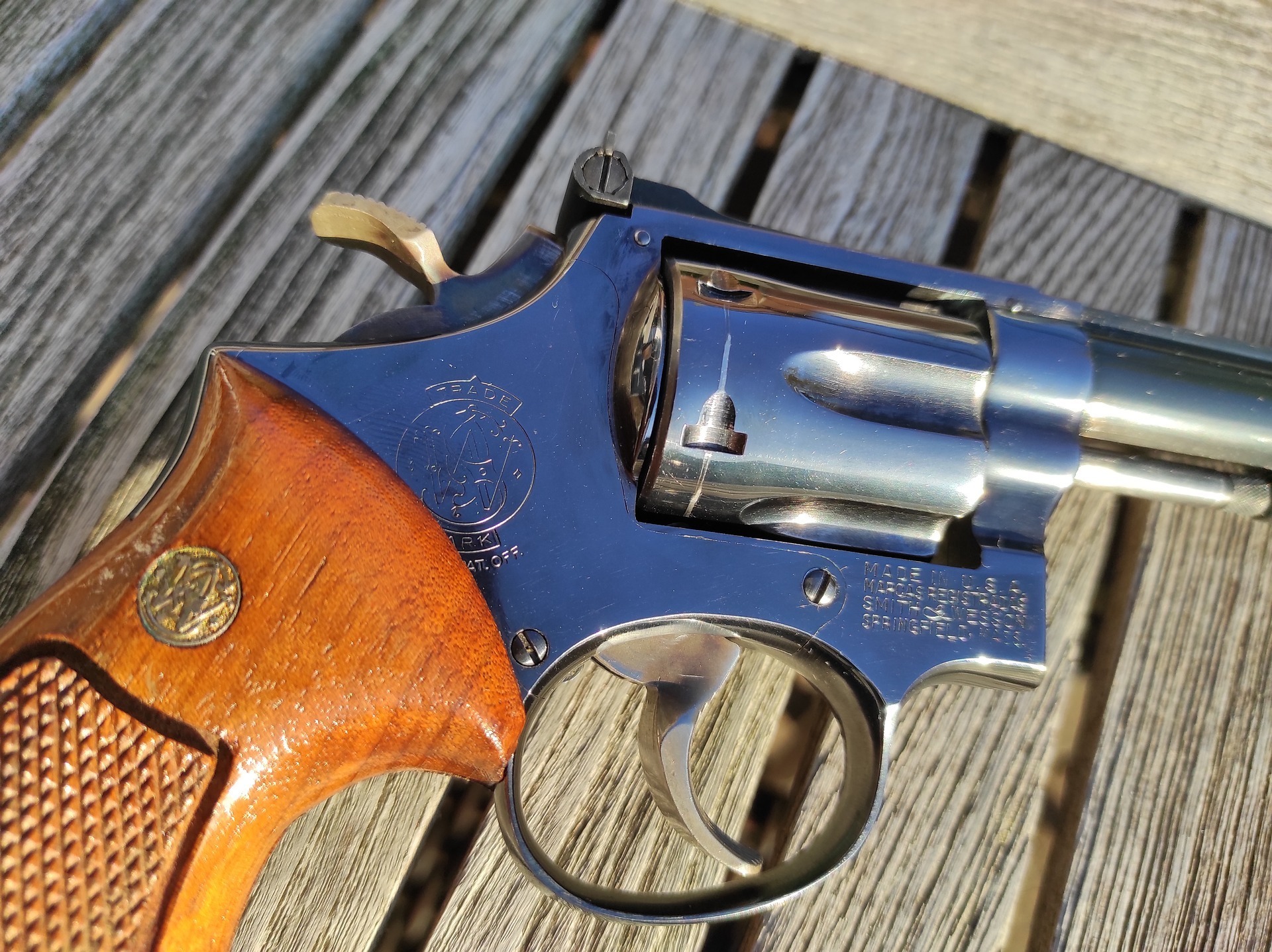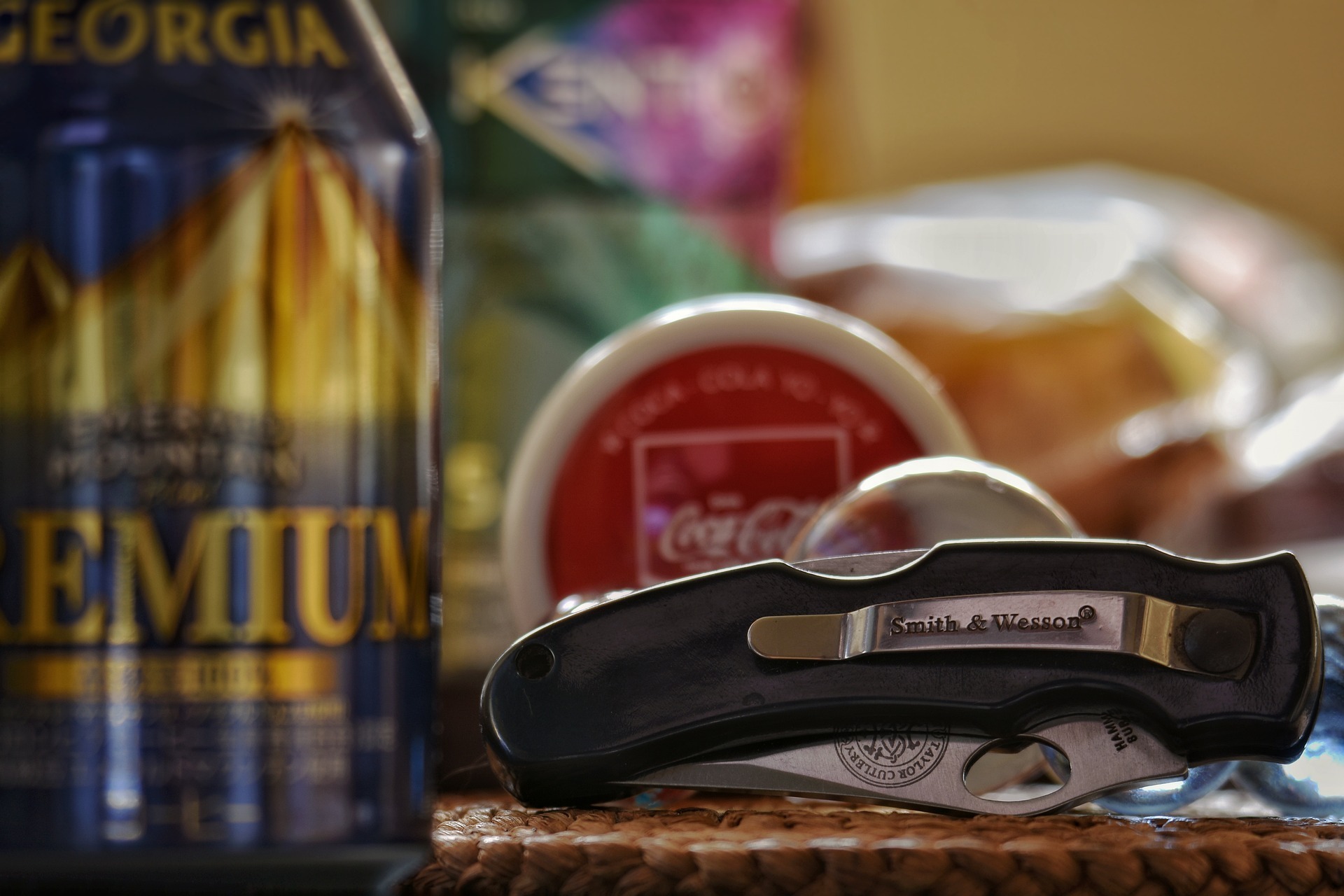Smith and Wesson is one of the world’s most famous firearms manufacturers founded by Horace Smith: a gunsmith, inventor, and businessman, and Daniel Wesson: an inventor and firearms designer.
In 1852, they founded their first company, “Smith and Wesson Company” – to develop the Volcanic rifle. Smith patented the “new volcanic cartridge”, an improved version of the “Hunt Rocket Ball”, a type of bullet in 1854. A year later, the company changed its name to “Volcanic Repeating Arms” after being purchased by Oliver Winchester. Smith left the company and went back to his native – Massachusetts. Meanwhile, Wesson stayed as a plant manager for eight (8) months.
Daniel Wesson started developing a prototype for a cartridge revolver as Samuel Colt’s patent on the revolver was expected to expire in 1856. His research later led him to Rollin White, a former Colt employee – who patented the “bored-through cylinder” that Wesson needed for his invention. He left Winchester’s company and reconnected with Smith as they approached White to produce a newly designed revolver-and-cartridge combination. However, rather than bringing on White as a partner in their newly founded business: “Smith and Wesson Revolver Company”, they paid him $0.25 on every revolver they manufactured.
This arrangement left White in financial ruin as he was responsible for defending his patent on his “bored-through cylinder” from being used in an invention without monetary compensation. However, it was used to manufacture the newly-produced handguns of Smith and Wesson, which led the company to a massive advantage of the situation.
During the American Civil War outbreak, Smith and Wesson’s revolvers became a popular demand because the soldiers from all ranks on both sides of the conflict made private purchases. The firearms ordering outpaced the factory’s production capabilities, which led the company to expand into a new facility in the year 1860.
In 1870, the company switched focus from pocket-sized revolvers to large-framed revolvers in heavier calibers. The U.S. Army adopted this new design widely known as Smith and Wesson Model 3: the first cartridge-firing revolver in the U.S. service.
Smith and Wesson later launched its famous revolver, which is the “.38 Military and Police”, also known as the “Smith & Wesson Victory Model” – (Smith and Wesson Model 10), in 1899. With about 6 million manufactured, it became the standard sidearm of American police officers for much of the 20th century.
In 1935, Smith & Wesson released the Smith and Wesson Model 27 which was the first revolver chambered for a .357 Magnum, it was designed as a more powerful handgun for law enforcement officers.
The Wesson family sold the company to Bangor Punta – a well-known American conglomerate – in 1965. The company diversified Smith and Wesson’s sales to include gun-related products such as holsters, handcuffs, and breath analyzers in the market. According to Business Week, Smith & Wesson became “the envy of the industry” by the late 1970s as a result of these successful decisions.
In the 1980s, the company’s market share began declining despite its popularity as the war on drugs intensified in the United States, and police departments across the country replaced their Smith and Wesson revolvers with European firearms and weaponry.
Tomkins plc purchased Smith and Wesson in June 1987 from Bangor Punta. Tomkins modified the production equipment and initiated additional testing to increase the firearm’s product quality. However, gun sales had fallen behind in the 1990s. Some of which were attributed to the Federal Assault Weapons Ban of 1994.
Smith and Wesson made an agreement with U.S. President Bill Clinton, under which it would implement changes in the design and distribution of firearms. The agreement also stated that all authorized dealers and distributors of the company products will abide by the “Code of Conduct”, to eliminate the selling of weapons to unauthorized persons.
However, after an organized campaign by the NSSF (National Shooting Sports Foundation) and NRA (National Rifle Association) – a gun rights advocacy group, thousands of consumers and retailers have boycotted Smith and Wesson as they did not agree with the new restrictions that the company has abided. Gun users saw the company as a traitor and perpetrator of gun control as they believe that the company has given into political persuasion.
On May 2001, Saf-T-Hammer Corporation – a manufacturer of firearms locks and other safety products – bought Smith and Wesson from Tomkins plc. Bob Scott, the business’s President, had bought the company intending to implement its line of security products into all Smith & Wesson weaponry.
In 2006, Smith and Wesson refocused its marketing on big box retailers under the leadership of Mike Golden.
American Outdoor Brands Corporation was Smith and Wesson’s new company name in November 2016.
In 2017, the company was forced to lay off one-fourth of its manufacturing employees as the company faced severe contraction in its sales due to the use of Smith and Wesson’s handguns in some cases of mass shootings in the United States.
Conclusion:
Smith and Wesson has been prospering since the mid-1800s. The company has been one of the primary firearms suppliers for the police and armed forces nationwide. Despite the challenges of the past years, Smith and Wesson continues to make top-notch firearms and weaponry for today’s generation. In addition to a massive selection of apparel and gun accessories, Smith and Wesson is still one of the most well-known companies that manufacture firearms and handguns.


